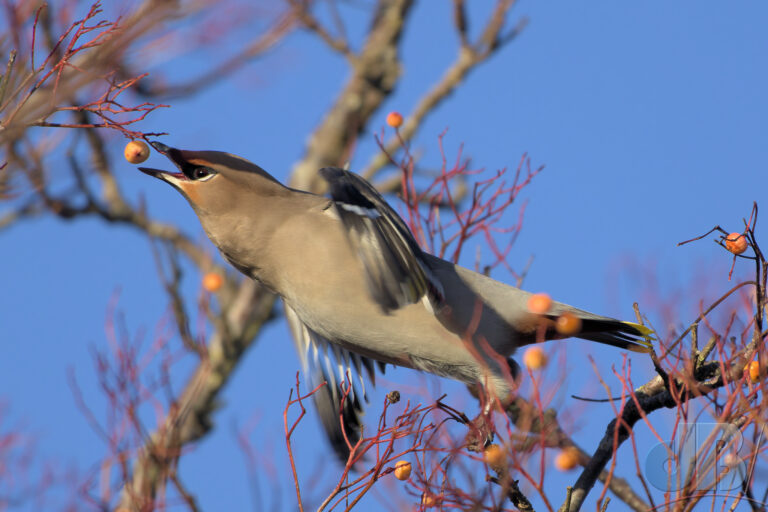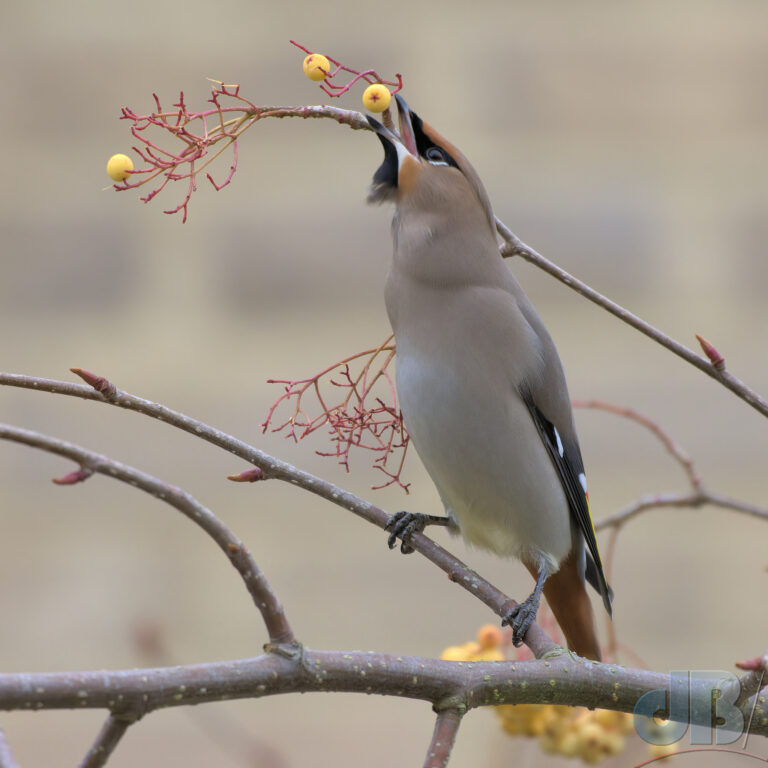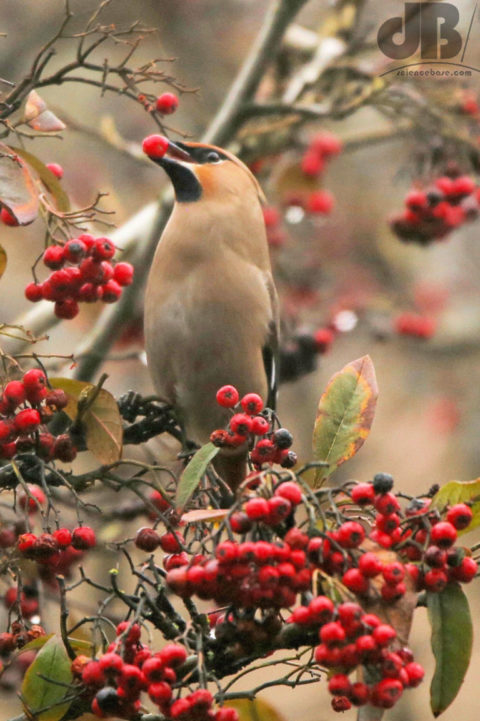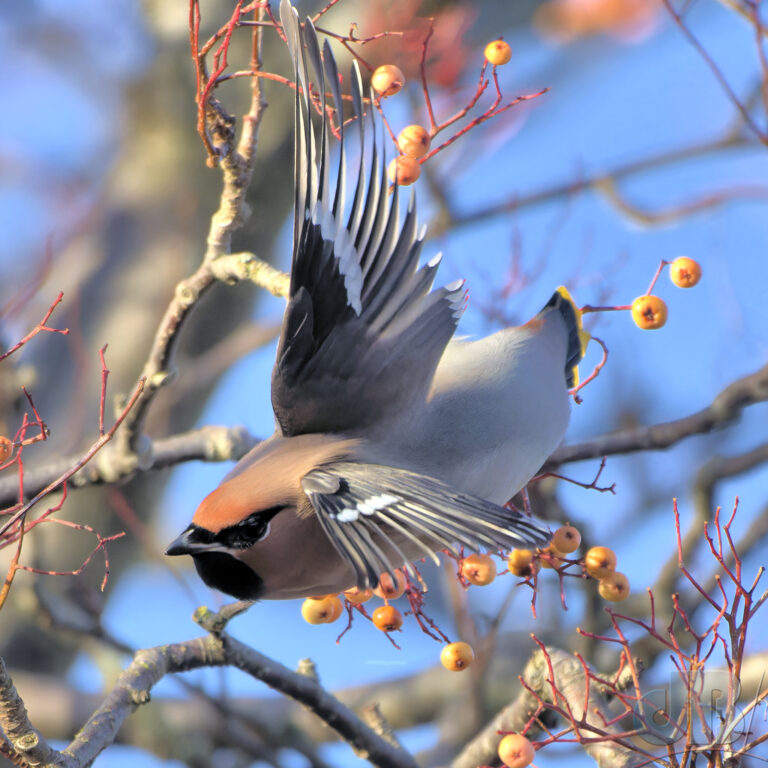In the winter of 23/24 we had a Waxwing irruption. This is a sudden influx in large numbers of a species driven from its usual habitat and habit because of changes in the local conditions. In the case of Waxwings (Bohemian Waxwings, specifically) they spend their summers in breeding grounds in the far north, Scandinavia, largely.

As winter encroaches a few will head south and west and the Scots often report sightings early in the season. However, if there are plenty of berries on the bushes and trees in Scandinavia, the majority will stay put. Each bird can eat dozens, if not hundreds, of berries every day, so there is occasionally a chance that demand will outstrip supply. When this happens the birds, along with the winter thrushes (Fieldfare and Redwing) will be forced to head south to find food.

The birds will occasionally head south in waves. Large flocks might turn up in seemingly unusual places like city parks, supermarket car parks, churchyards, and other urban sites and even gardens. Usually, it’s wherever there are berry-laden rowan trees, although the birds will eat mistletoe, ivy, and any other winter berry they can find. Birders usually report the flow of birds south and it often seems like the Waxwings specifically follow the roads. Roundabouts and service stations often have berry trees, after all!

In the winter of 24/25, we’ve barely had any Waxwings in England. A handful! In early January, 2024, Mrs Sciencebase and myself were watching a flock of 30+ that were hanging around the ivy-encrusted trees near a local railway station and alighting on the rowan trees. This year, there has been a bumper crop of berries much further north and at the moment, the birds have no need to head south.

That said, they will, if there are sufficient birds, eventually eat most of those berries and the birds will then need to head south to feed. I remember about eight years ago a flurry of Waxwing activity on rowans at the bus stop close to the Cambridge Science Park and that was in April…so there is time yet.
Interestingly, BBC Winterwatch had a short piece in episode 1 this season about the species, discussing how the bird’s tongue has a barb to help them gulp down berries whole. The team didn’t mention the fact that we’re unlikely to see an irruption this season, sadly.